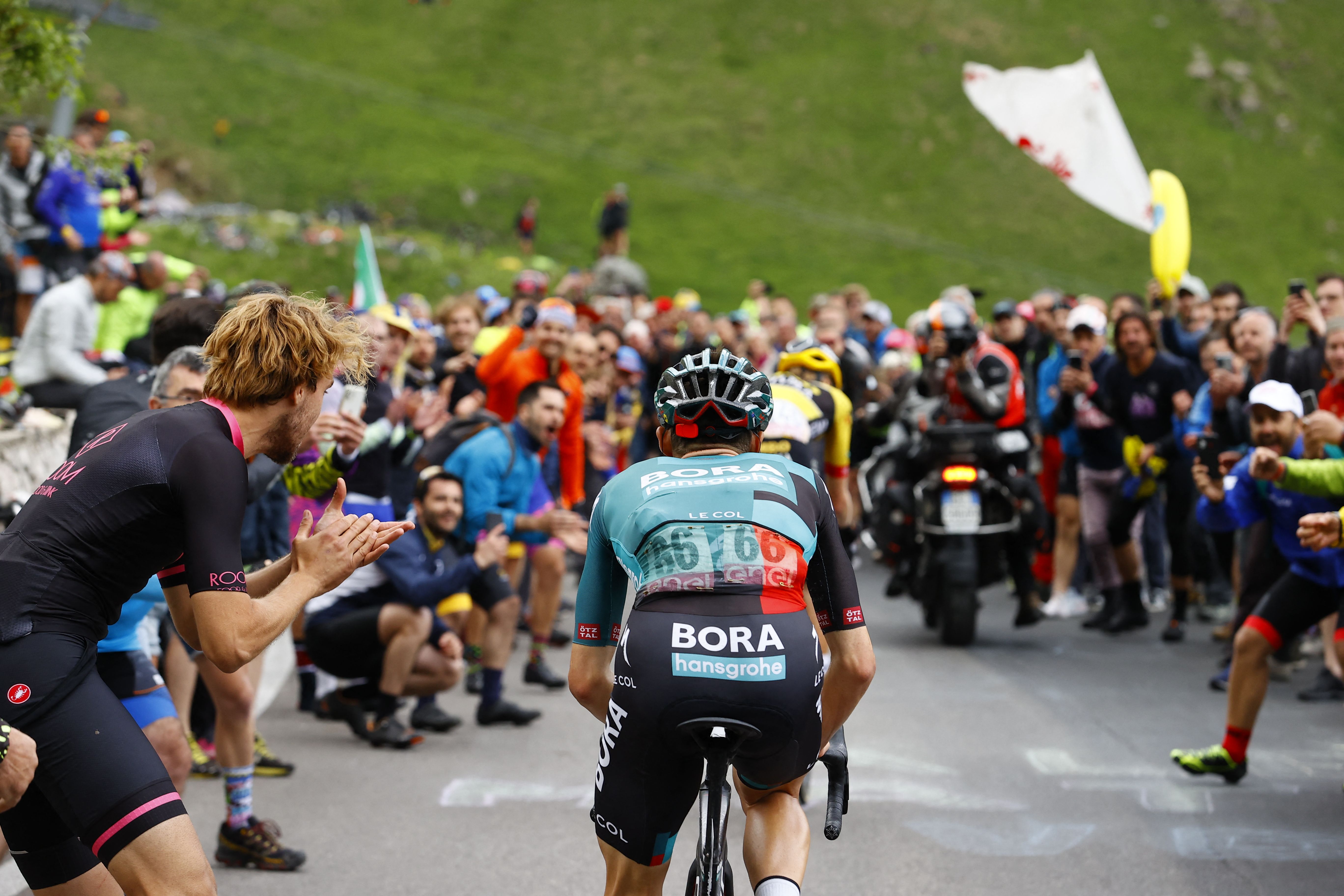
The first Grand Tour of the men’s season begins this Saturday with the Giro d’Italia.
At almost 3,500km in length, the route will see the peloton cross westwards from the Adriatic to the Tyrrhenian coast, north through the Alps and the Dolomites, before heading back down south to the capital city of Rome.
It'll be a 21-day battle for the maglia rosa, fought out between GC hopefuls such as Remco Evenepoel, Primož Roglič and Tao Geoghegan Hart.
Here are five key stages, all of which are likely to be pivotal to the overall standings.
Read more: How to watch the 2023 Giro d'Italia
Stage seven - Capua > Gran Sasso d’Italia (218km)
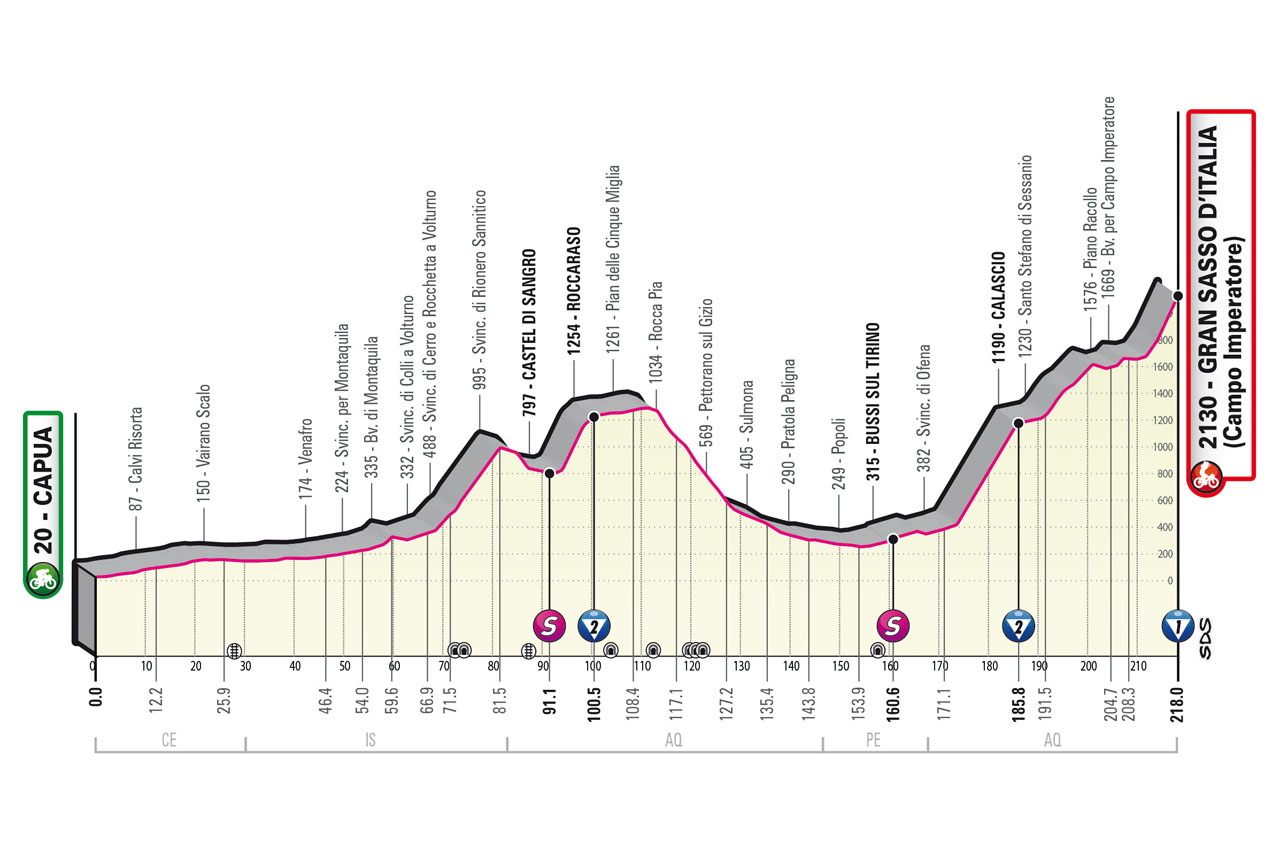
The first real climbing test comes at the end of the race’s first week.
On stage seven, the riders will face the second of seven uphill finishes at this year’s Giro d’Italia, climbing above 2,000m altitude for the first time.
Leaving Capua, the peloton will traverse the rolling Apennines en route to the Gran Sasso d’Italia. Though the ramps on the final climb aren’t the steepest at the race, they’re likely to take their toll on tired legs after over 200km of racing. Indeed, of all 21 stages, day seven is the second longest, just one kilometre shorter than the flatter stage 11.
Stage 13 - Borgofranco d’Ivrea > Crans Montana (207km)
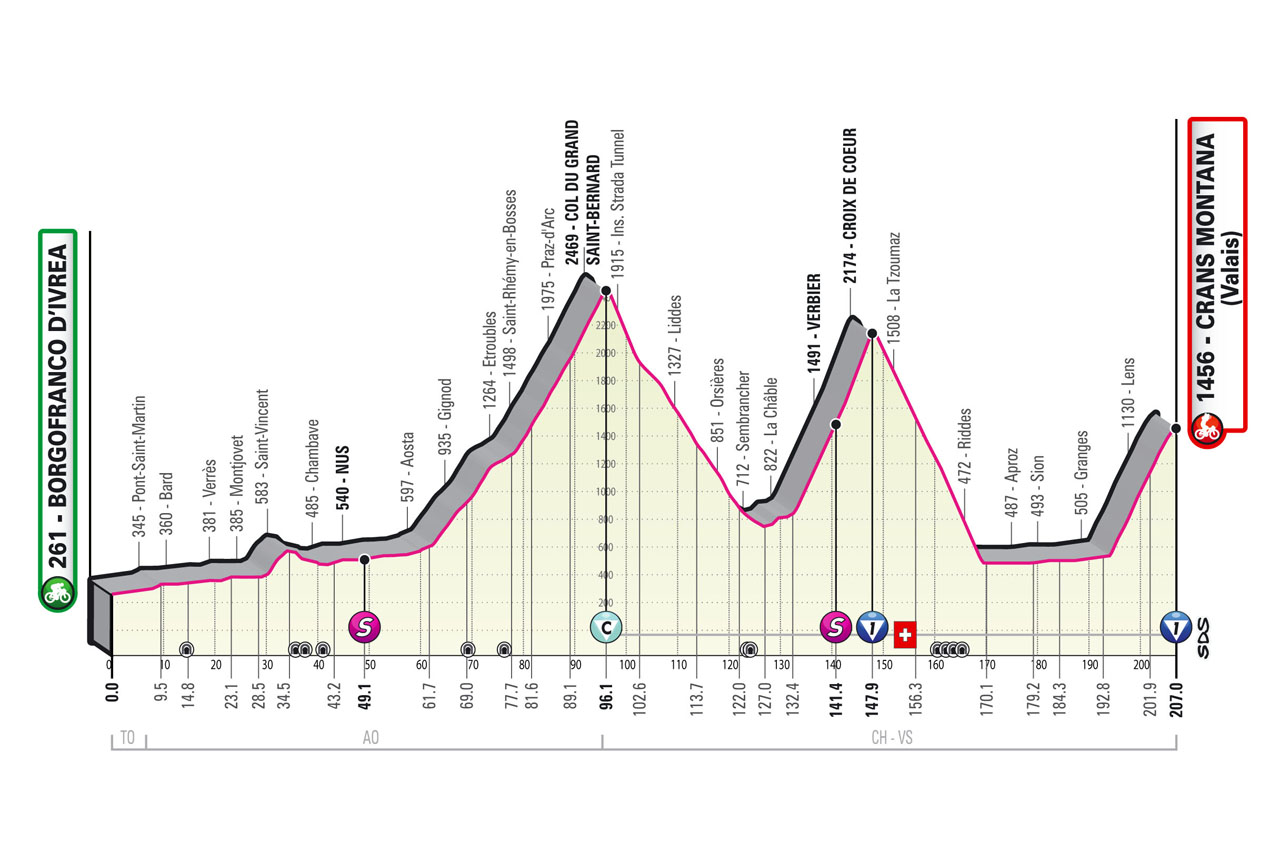
The race crosses outside of Italy on stage 13, passing into Switzerland for a summit finish atop Crans Montana.
With 5,100m of elevation, it’s one of a trio of days that clock up over 5,000m of climbing, together with stages 16 and 19 (both detailed below).
Stage 13, however, is made more punishing by counting the Cima Coppi, the race’s highest peak, in the form of the 34km-long Col du Grand Saint-Bernard, which comes in the opening 100km. Two more ascents follow, including the mountaintop finale in the Swiss Alps.
Stage 16 - Sabbio Chiese > Monte Bondone (203km)
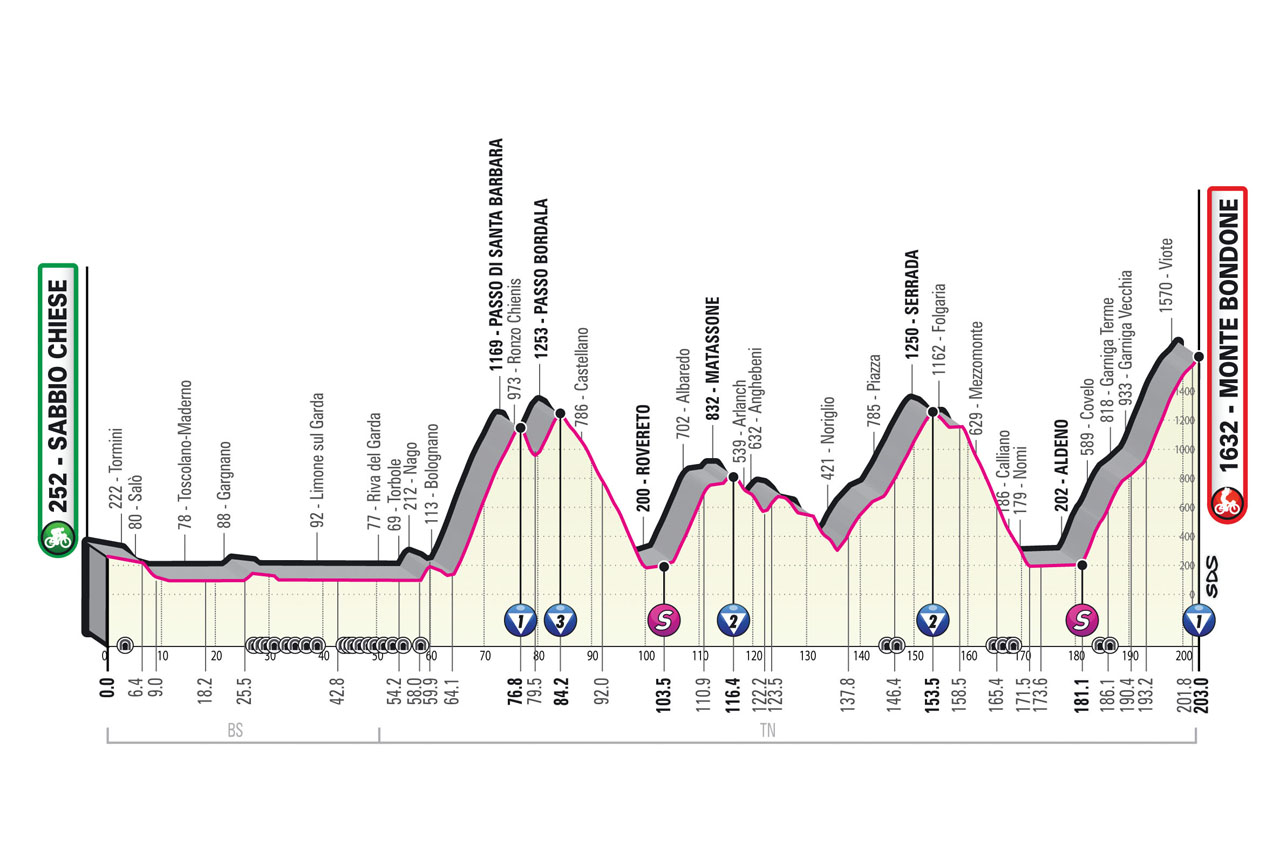
Stage 16 brings yet another day in excess of 200km, and another gruelling mountains test for the GC favourites.
It begins with a flat trundle along the western shore of Lake Garda, before a sawtooth profile of climbs commences. Among them are the Passo di Santa Barbara, the Passo Bordala, the Matassone, and the Serrada.
The toughest, as usual, is saved for last. The gradients of the category-one Monte Bondone are uneven, fluctuating between 3% and 15% over 21km. It begins to abate towards the summit, so expect attacks on the steeper section, which falls under the 5km to go banner.
Stage 19 - Longarone > Tre Cime di Lavaredo (183km)
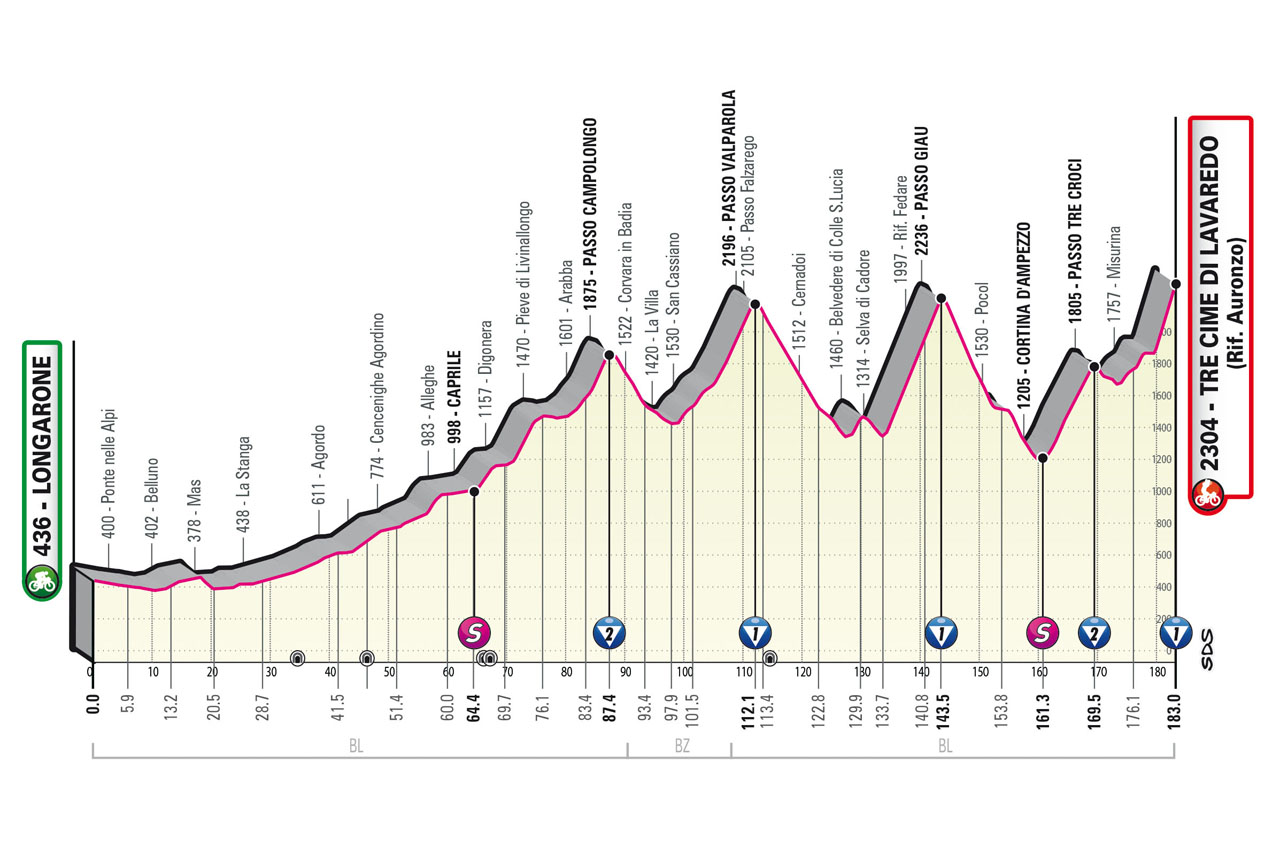
In a stacked final few days, stage 19 will send a chill down the riders’ spines. It is, undoubtedly, the race’s Queen stage, carrying a whopping 5,400m of elevation, spread across five climbs.
The first starts almost from the flag-drop, with the steady ascent of the Passo Campolongo. Next on the menu are the category-one duo of the Passo Valparola and the Passo Giau, both staples of the Italian Grand Tour.
The finale is marked by the Tre Cime di Lavaredo, which makes its return to the race after a decade-long absence. Named after the three craggy peaks at its summit, the climb, rising to 2,300m altitude with pitches at 18%, will provide a crucial challenge for the GC contenders.
The last time it featured, Vincenzo Nibali prevailed through a snowstorm at the finish line, en route winning his first Giro d'Italia.
Stage 20 - Tarvisio > Monte Lussari (18.6km, ITT)
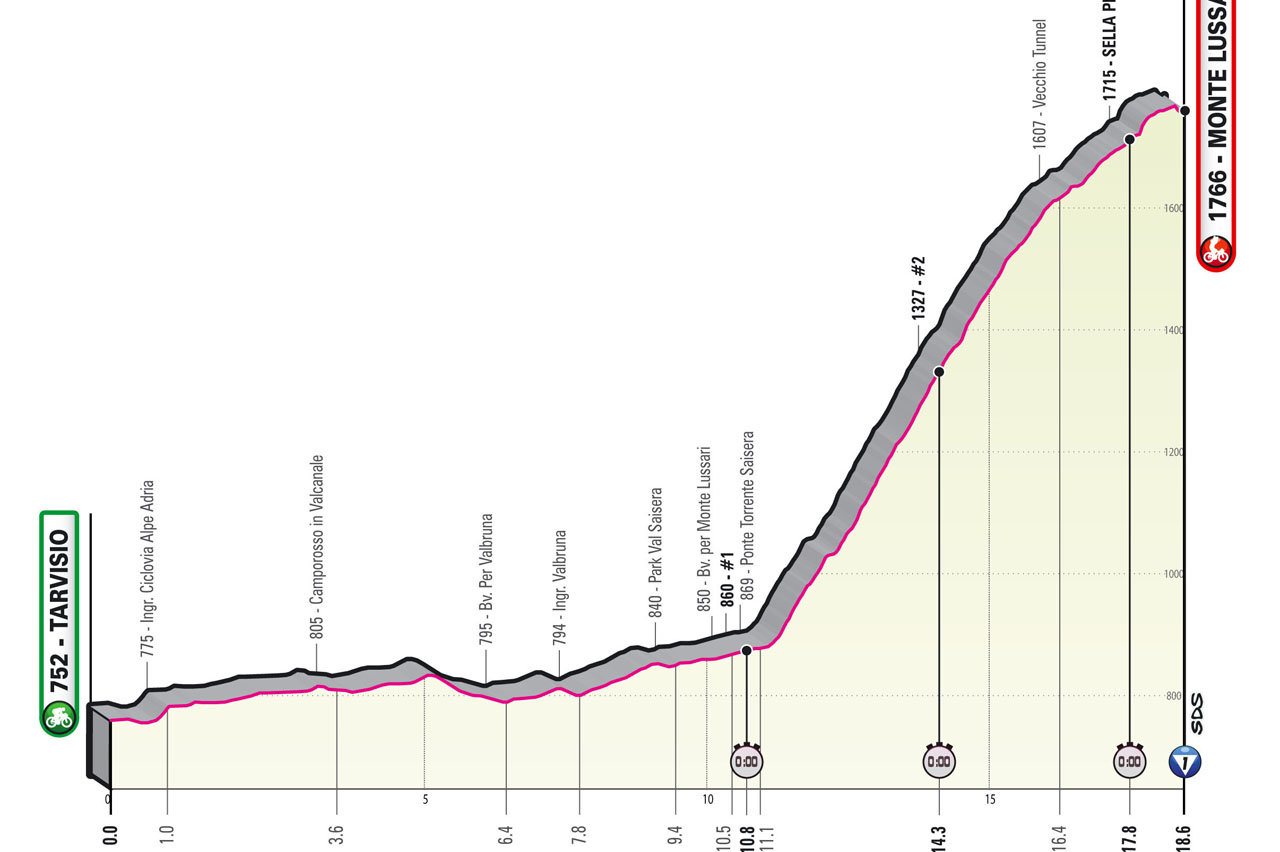
Competency against the clock will be crucial at this year’s Giro d’Italia, with 73.2km of time trialling split over three stages. The most taxing of these comes on the penultimate day, when the maglia rosa winner will be decided in an uphill test to Monte Lussari.
The riders will thunder out of Tarvisio on rolling terrain before reaching the foot of the 7.3km climb. Immediately, the gradient kicks up to 15%, with no respite for the first 5km. A short let-up in the road follows, before a grand finale of steep ramps, peaking at 22%.
It’s a stage reminiscent of the penultimate day at the 2020 Tour de France, when, atop the Planche des Belles Filles, Tadej Pogačar overcame a 57-second deficit to Roglič, and added an extra minute for good measure.
In anticipation of a similar day of drama, the Giro d’Italia race organisers have designated a special bike change zone at the foot of the climb. Expect fireworks.







